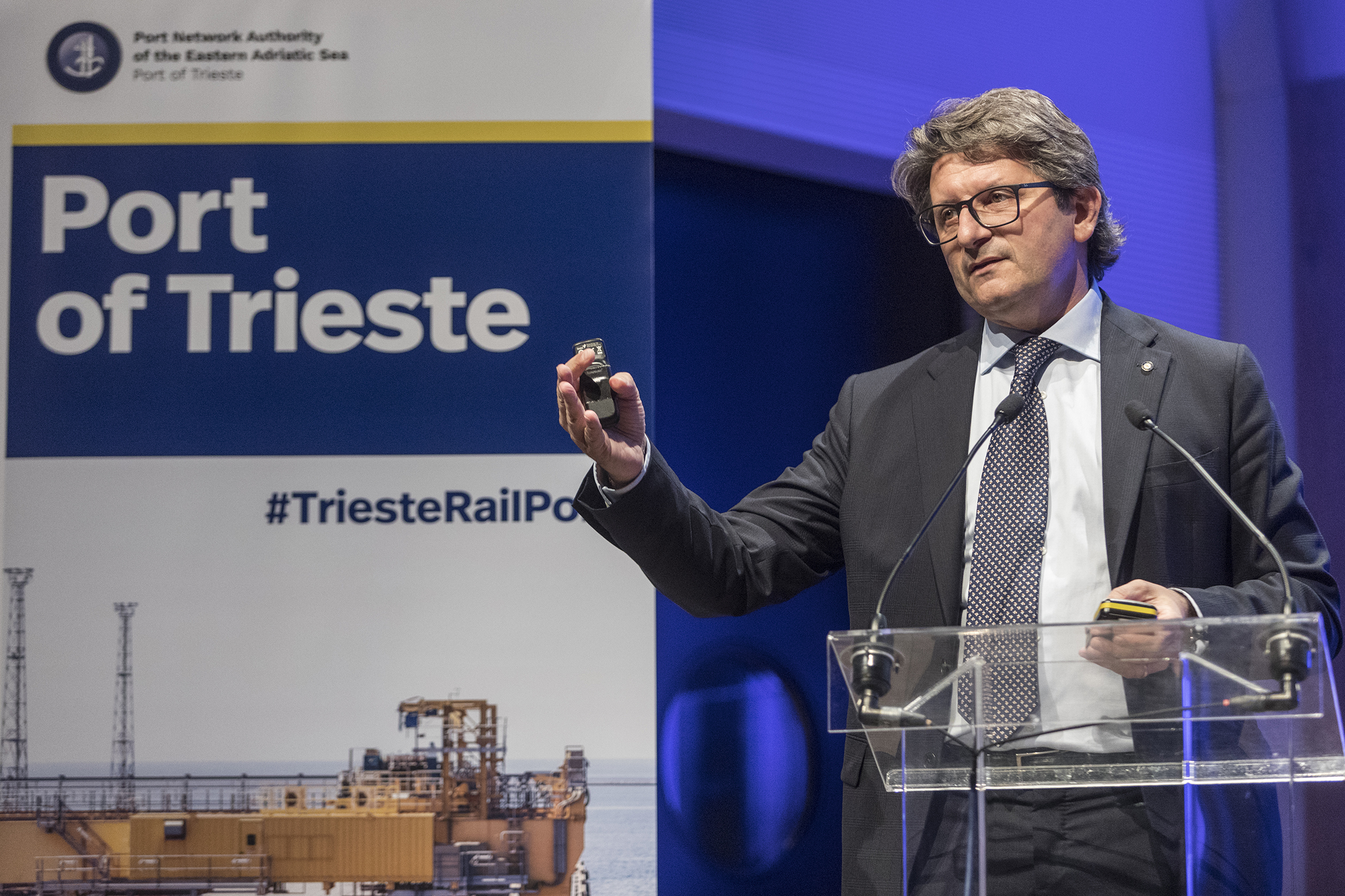From Trieste to Hungary, Port’s intermodal traffic takes off
03 / 10 / 2017

TRIESTE – "Hungary is becoming Trieste’s first reference market, as for its Port’s railway container traffic”, stated in Budapest Zeno D’Agostino – President of the Port Authority of the Eastern Adriatic Sea – highlighting the importance of the two-day presentations of the Port of Trieste within the Hungarian capital.
More than 200 professionals – representing shipping companies and logistics operators, as well as Hungarian investors, banking groups and other operators from Trieste and Monfalcone – gathered in the Music Center, where such event was held and sponsored by the Italian Embassy in Budapest. Seven pairs of trains currently leave the Molo-VII terminal container (Trieste) for Budapest every week, but an additional implementation of the service is already planned. “None of the other intermodal links we have launched so far has ever achieved a similar success”, explained D’Agostino.
The Port of Trieste shows great opportunities of developing strong trade relations with Hungary. The link with Budapest was established in 2015 and it originally included two round-trips per week, leaving Trieste Marine Terminal in the early afternoon to reach Budapest-Mahart at 10 a.m. the following day. Since then, it has rapidly enjoyed a boom quickly leading to four – now seven – pairs of trains per week. The volumes of traffic confirm this trend: in the first year, 4000 Teu were handled by the intermodal service reaching the Hungarian capital on the Danube, while the records for the first eight months of 2017 nearly reached 20,000 Teu.
Such event was also the perfect occasion to describe the Port’s developing plans, according to the first eight months of 2017: the overall volumes (January-August) have shown a +2.80% growth compared with the same period of 2016, while the container sector registered a +22% increase in Teu, general cargo +12.75% and RO-RO +3.78%. The port-of-call railway traffic is rising as well, reporting a total amount of 5,537 trains handled so far – a +14.61% increase on the same period of 2016 – and fuelling the expectations of 9,000 trains handled by the end of the year.

